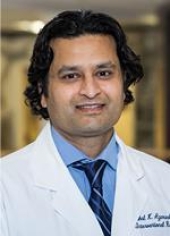Integrated Interventional Radiology Residency Program
About the Integrated Interventional Radiology Residency Program
This is an exciting time for Interventional Radiology (IR). The American Board of Medical Specialties (ABMS) has recognized IR as a unique clinical discipline in medicine and the Accreditation Council for Graduate Medical Education (ACGME) has created a new training program to give physicians the cognitive knowledge, procedural skill, and clinical expertise necessary to practice in this new specialty. UCSF already has a superb Diagnostic Radiology (DR) Residency and we have worked closely with the DR Program Director, Dr. Soonmee Cha, to make sure that the new IR residency provides excellent training in DR as well as robust training in all aspects of IR. UCSF currently matches one Integrated IR resident per year.
The UCSF Interventional Radiology Section is committed to advancing diversity, equity and inclusion as these remain vital to the practice of minimally invasive image guided therapies for patients, trainees, faculty and workforce. The principles of equity and inclusion, as rooted in our anti-racist, anti-sexist and anti-homophobic programmatic values, are essential to the educational mission of our fellowship. Our curriculum and educational practices reflect our ongoing commitment to dismantling structures of power, oppression and privilege within graduate medical education, and in recruitment practices to the specialty of Interventional Radiology. Our aim is to create a safe and equitable learning environment for all members to thrive.
Educational Program
The five-year IR curriculum consists of 3 years focused on diagnostic imaging and 2 years focused on IR. Up to nine months of the fourth year (PGY5) will be spent in IR or IR-related rotations. IR residents will take call for diagnostic radiology during the first four years and will take call for IR in the final year. The IR section provides training across the broad domain of vascular and non-vascular procedures. Clinical care is at the heart of our IR practice. The UCSF IR section admits patients, manages inpatient care and maintains a robust clinic practice.
IR Faculty
The IR faculty consists of full-time Interventional Radiologists under the direction of Dr. Pallav Kolli, the IR Section Chief and the IR Residency Program Director. In addition, there are full-time Interventionalists at the Zuckerberg San Francisco General Hospital and Trauma Center (ZSFG) and one at the San Francisco Veterans Administration Medical Center (VAH). Introductory IR rotations take place at ZSFG and VAH and advanced rotations are located at the University Moffitt and Mission Bay campuses as well as the Mount Zion outpatient IR center.
Internship
We encourage those interested in IR to obtain a strong clinical internship (PGY1 year) in medicine or surgery. Clinical internships at UCSF in General Surgery can be structured with the IR residency in mind and we encourage IR residency applicants to apply for a general surgery preliminary position at UCSF. The last two months of the PGY1 surgical internship will be spent in the IR section.
Application Process
Students may enter IR in two ways:
- Apply directly from medical school into an Integrated IR residency or
- Apply to a DR residency program now and apply later to an Independent IR residency during the third year (PGY-4) of diagnostic radiology residency training.
UCSF offers one Integrated IR residency position and three Independent IR residency positions. Students interested in IR at UCSF have the option of applying to our Integrated IR Residency or the DR residency.
- Medical students who know they want to specialize in Interventional Radiology may want to apply to the Integrated IR residency.
- Students who are considering IR but are also strongly interested in DR may want to apply to the DR program.
Applicants for the IR and DR programs will be evaluated using the same process and according to the same standards.


